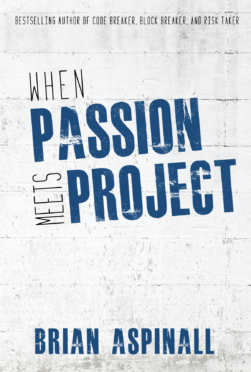Maybe you’re reading this because, like me, you’re passionate about makerspaces. Maybe you’ve heard all the buzz about makerspaces, but don’t really understand what they are. If you’re in the latter category, here’s a quick overview:
In an educational setting, a makerspace is an area designed for students that allows them to work together to tinker, craft, build, explore, and, most importantly, MAKE something. They’re often located in school libraries, but some teachers have taken it upon themselves to create makerspaces in their classrooms.

There’s no one right way to design a makerspace, so they vary depending on the environment and student needs. Some makerspaces keep it low tech, and have supplies such as Legos, cardboard, plastic containers, and scrap fabric. Others have tons of high tech tools, such as circuits, drones, and coding robots. For some, it’s a mix of the two. The success of a makerspace isn’t based on the tools it has, but on how well the students are engaged in using it.
Mobile STEAM lab time at the #eselibrary @ESEStallions #grantsinaction @FoundationMISD #misdliblove #makerspace pic.twitter.com/fv5byCcJn3
— Laura Carr (@LauraBCarr) January 10, 2019
Here’s what a makerspace isn’t: an extra recess, a reward for good behavior, or a haven only for select “advanced” students.
According to the Dell Technologies Realize 2030 Report, 85% of the jobs that will exist in the year 2030 haven’t even been invented yet. So, asking our students what they want to be when they grow up is moot, because their jobs don’t exist yet. If we want our students to be employable and prepared for any job, they have to learn how to creatively solve problems, persevere through challenges, collaborate with others, and think critically. Every student, whether receiving special education services or identified as gifted and talented, is entitled to the opportunity to build these skills, and the makerspace is the perfect place to do that.
I know it’s easier said than done. I’ve been in the classroom in a state with high-stakes testing, and I know how oppressive and all-consuming intervention is, and how frustrating it is when your kids don’t turn in their work. It’s easier to make them sit out of something seemingly frivolous, like makerspace time, so that you can get your RTI minutes in or have them make up work. However, I would argue that these are the kids that need makerspaces the most. Having worked in a Title 1 school, I knew that some of my students were having to be the adult when they went home, or were just trying to make it through the night until they could get back to the safety of school the next day. These kids didn’t necessarily have two supportive parents at home to recognize and nurture their budding creativity. Some did have some amazing talent, especially in the arts, but never had an opportunity to explore it because they were always being pulled out of the “fun” activities to make up work or get intervention. I often wonder what skills we could have uncovered or fostered if we just gave these kids the freedom to explore.
Surprise challenge: make a bridge #makerspace #misdliblove @lillardleopards pic.twitter.com/ZQ5xGhYxCX
— Laura Carr (@LauraBCarr) November 27, 2018
When Nipsy Hussle, the rap musician, passed away, I was skimming a news article about his funeral. A story his brother told at the service caught my attention. His brother said that Nipsy wanted a computer, but didn’t have the money to buy one. So, he started bringing home random computer parts, whatever he could find, and worked out how to put them together buy studying magazines and books. One day, his brother came home, and the computer was not only built, but functional. This is what Nipsy ended up using to record his music at the beginning.
It’s a wonderful story, and it really got me wondering just what kids like him could accomplish if given the time and opportunity in school to explore their interests and skills. Think about how teachers could guide these students into classes like computer science or engineering, classes they probably never would have considered if not for the makerspace.
Getting every student access to the makerspace is a team effort. First, administrators need to understand the value of makerspaces, above and beyond the basic knowledge that it’s the hip new trend in schools. The librarians need to be on board, and be flexible in working with teachers to schedule a time for every student. Finally, and often overlooked, the community needs to get involved. If parents understand the importance of makerspace time, they’re more likely to encourage their students to participate. Local businesses are a great resource for supplies and donations, and will often make time to come in and work with students to share their skills.
Creativity. Collaboration. Communication. Critical Thinking. #Makerspace challenge. @TxBookiemonster @The_Amoxtli @mzperry10 @jobemavericks @HowardMSknights pic.twitter.com/butPZCGNVf
— Laura Carr (@LauraBCarr) November 9, 2018
We need to find the time. We need to make the time. We need to give these kids a chance, because the makerspace is for EVERY student.

Laura Carr is an Educational Technology Trainer for Mansfield ISD in Texas. She is passionate about helping teachers to integrate technology into their classrooms in new and exciting ways, and loves to help district librarians nurture the next generation of makers in their makerspaces. She graduated from UT Arlington in 2010 with a BS in Education. In August of 2019, she will have her MS in Learning Technology from the University of North Texas. In addition to being a Mansfield ISD Education Foundation grant recipient, she is a Microsoft Innovative Educator and Educator Community Influencer, an Apple Teacher, and Google Level 1 certified. She is married and has a 14 month old daughter who keeps her on her toes.
Twitter: @LauraBCarr – Podcast: EdTech in Ten – Blog: edtechinten.com
 For all the kids who grow up in a small town and think they don’t stand a chance. You do. I was once that kid.
For all the kids who grow up in a small town and think they don’t stand a chance. You do. I was once that kid.